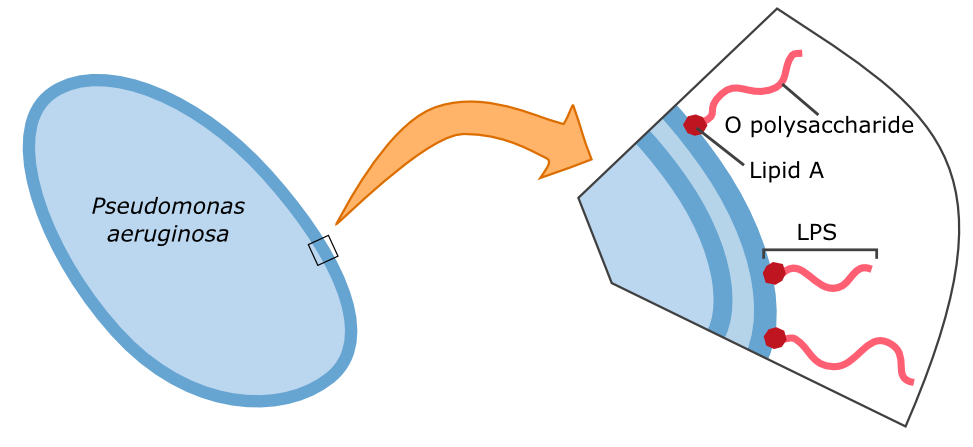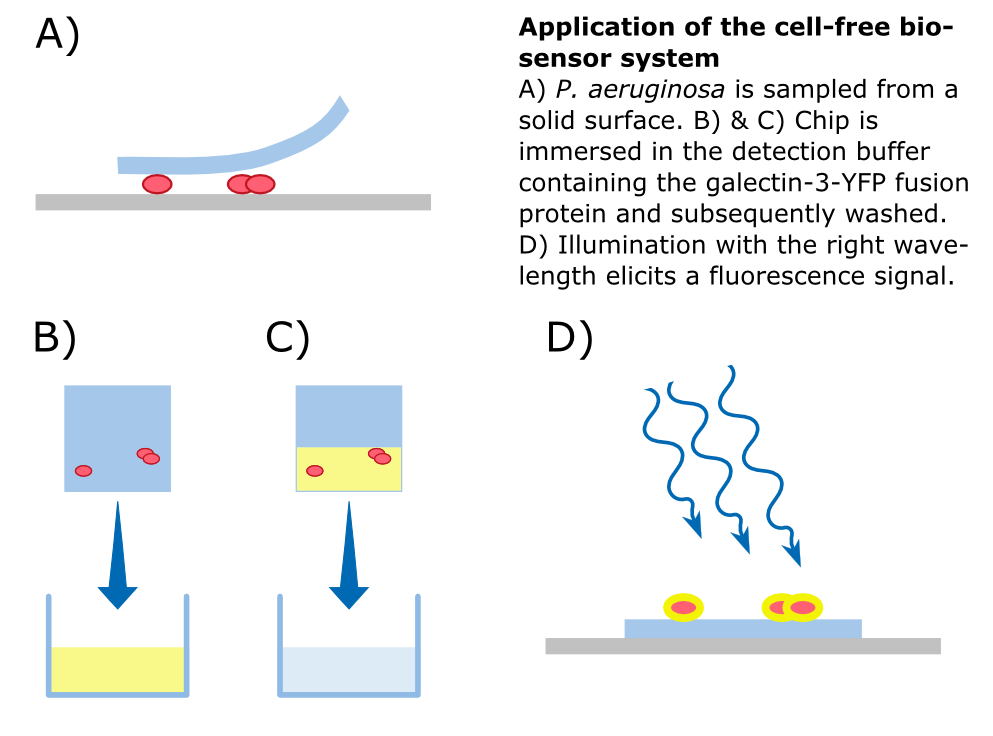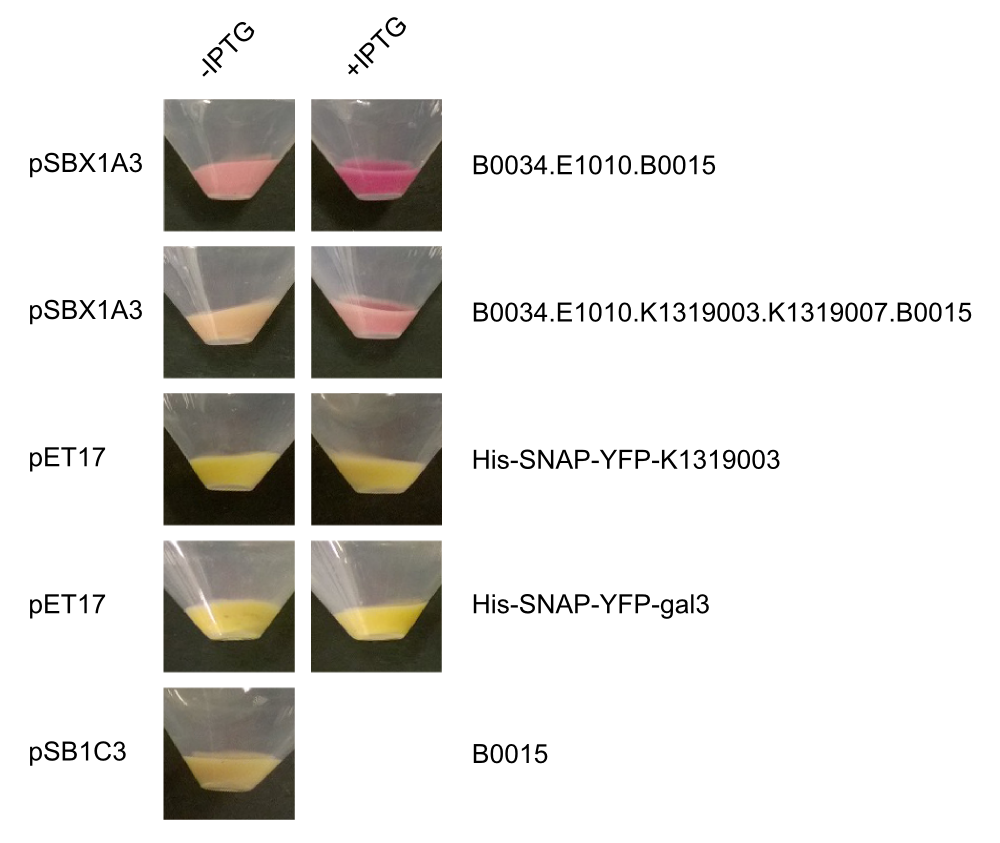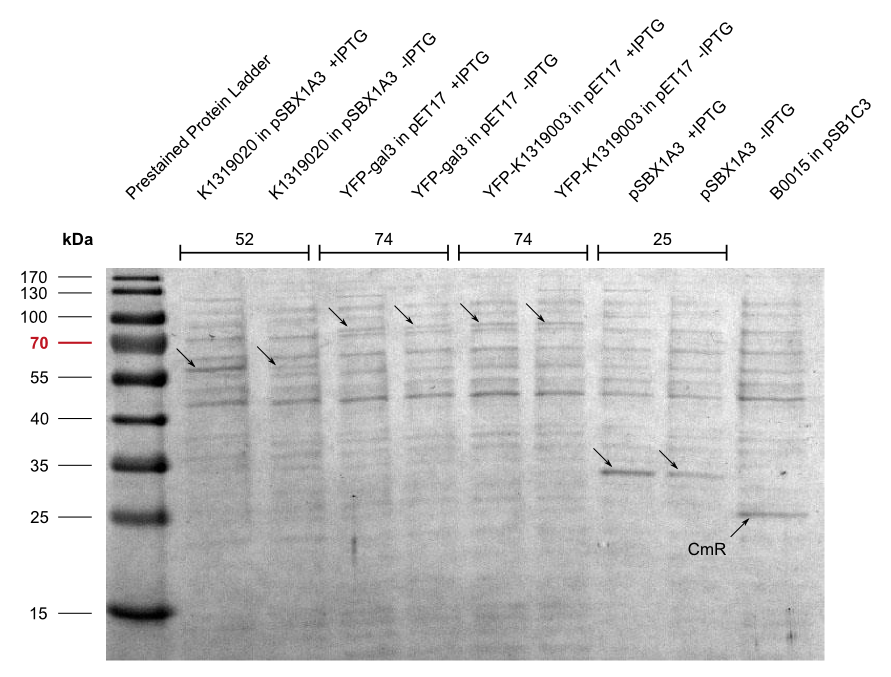Team:Aachen/Project/Gal3
From 2014.igem.org
m (→Achievements) |
(→An Alternative Sensing Molecule) |
||
| Line 57: | Line 57: | ||
<span class="anchor" id="alternativesensing"></span> | <span class="anchor" id="alternativesensing"></span> | ||
| - | {{Team:Aachen/FigureFloat|Aachen_14-10-09_Pseudomonas_LPS_iNB.png|title=Cell wall composition of '' | + | {{Team:Aachen/FigureFloat|Aachen_14-10-09_Pseudomonas_LPS_iNB.png|title=Cell wall composition of ''P. aeruginosa''|subtitle=Gram-negative bacteria have two cell membranes. The LPS are embedded in the outer membrane and are composed of a lipid and an O polysaccharide.|width=420px}} |
| - | The specific binding of galectin-3 enables the construction of such a detection system. Parts of the '''lipopolysaccharide structure (LPS)''' of '' | + | The specific binding of galectin-3 enables the construction of such a detection system. Parts of the '''lipopolysaccharide structure (LPS)''' of ''P. aeruginosa'' can be bound by galectin-3. Specifically, the O polysaccharide (see figure on the left) of the LPS is recognized by galectin-3. A fusion protein of galectin-3 and a reporter protein, such as a fluorescent protein, can be built and applied in the detection of ''P. aeruginosa''. |
In our approach, a '''galectin-3-YFP fusion protein''' is built and expressed in ''E. coli''. A his-tag and a snap-tag for purification are included. The fusion protein can then be incorporated into a '''cell-free biosensor system'''. Such biosensors have many advantages over systems that use living cells; storage, for example, is much easier. From a [https://2014.igem.org/Team:Aachen/Safety biosafety] and social acceptance perspective, it is also advantageous if the sensor system does not contain live genetically modified organisms. | In our approach, a '''galectin-3-YFP fusion protein''' is built and expressed in ''E. coli''. A his-tag and a snap-tag for purification are included. The fusion protein can then be incorporated into a '''cell-free biosensor system'''. Such biosensors have many advantages over systems that use living cells; storage, for example, is much easier. From a [https://2014.igem.org/Team:Aachen/Safety biosafety] and social acceptance perspective, it is also advantageous if the sensor system does not contain live genetically modified organisms. | ||
Revision as of 22:39, 17 October 2014
|
|
|
|
 "
"







